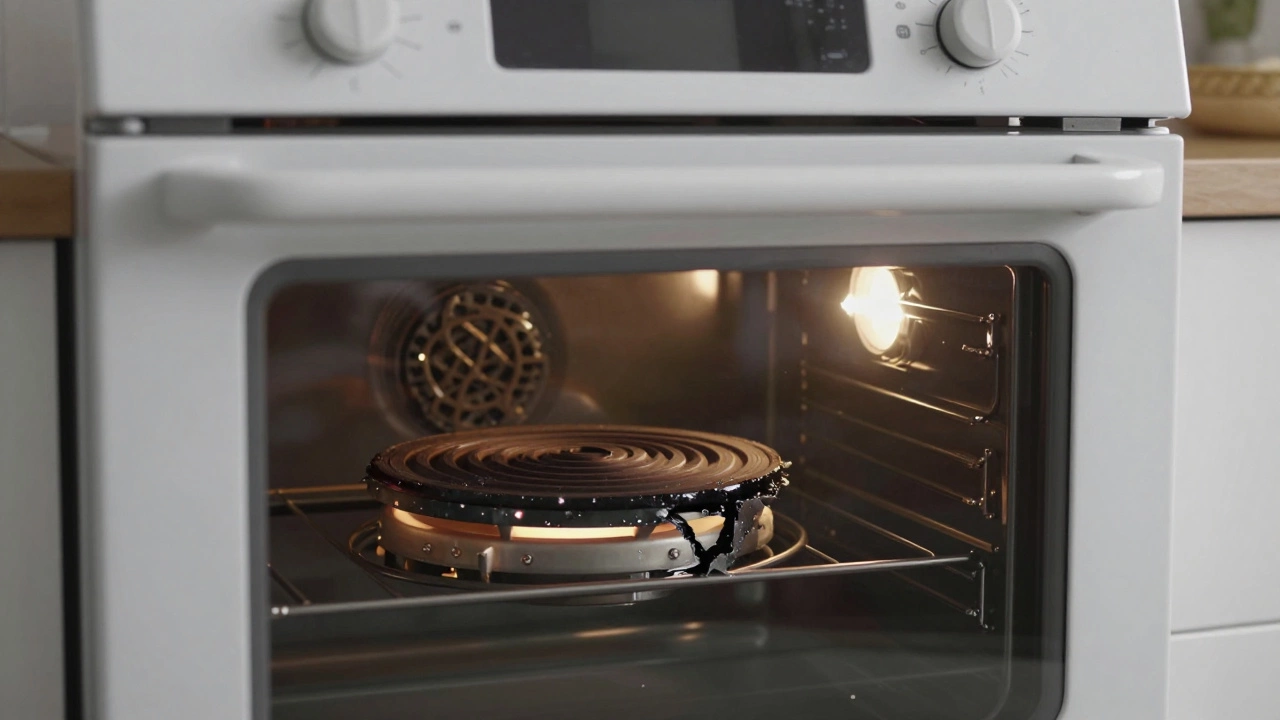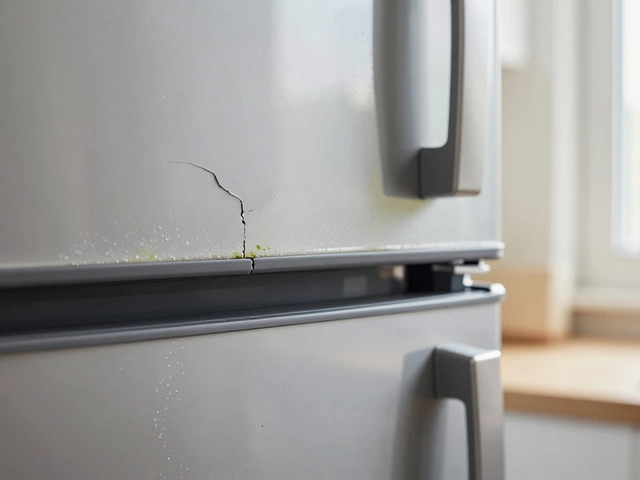If your oven’s just sitting there cold while your dinner plans melt away, you’re not alone. Ovens can quit heating for reasons ranging from dead-simple to “call the repair guy.” Figuring out the basics can save you time, money, and a lot of takeout meals.
Start by checking if your oven even has power. Wall ovens and ranges can get unplugged by accident, or a tripped breaker can knock them offline. Sounds obvious, but you’d be surprised how often this is the fix. If the clock is blank or nothing lights up, hit your circuit breaker box first—sometimes all it takes is a quick reset to get things humming again.
But what if the oven has power but won’t heat up? The number one culprit is usually a bad heating element. Electric ovens use two: one on the bottom for baking and one on the top for broiling. Open the door, look for visible breaks, burns, or blistering on these coils. No damage? Don’t assume they’re fine—sometimes they look okay but don’t work when switched on. Swapping them out is pretty straightforward if you're handy with a screwdriver.
- Obvious Power Problems
- Heating Elements Gone Bad
- Thermostat and Temperature Sensors
- When to Call a Professional
Obvious Power Problems
With any oven not heating situation, start with the basics. About one in five service calls for ovens turn out to be power issues. It's that common. Before even thinking about anything complicated, make sure your oven is actually getting electricity or gas.
- Electric ovens: If the oven clock is out or nothing lights up when you twist the knobs, check the outlet first. Sometimes the plug gets knocked loose during kitchen cleaning. Don’t forget the breaker box—ovens run on dedicated circuits, and those can trip easily after a brief power surge. Flip the breaker off and on again to make sure it’s reset.
- Gas ovens: If you smell gas, stop right here and call your utility company before you do anything else. If there’s no gas smell but nothing heats up, check that the gas shutoff valve is open. Sometimes those valves get turned by accident during cleaning or moving.
Another sneaky problem is a faulty power cord. If you spot any fraying, scorch marks, or loose connections, don’t ignore it—cord issues are a legit fire risk. Grab a replacement cord made for your oven’s model. If you’re not sure it’s the cord, try plugging in another small appliance to the same outlet to test it.
If you still can’t get any signs of life from your oven, it might be a blown internal fuse. Electric ovens often have one or more fuses as a safety precaution. These aren’t always in the same place—sometimes behind the back panel, sometimes under the stovetop. Be sure to unplug the oven before poking around inside.
| Common Power Issues | What To Check |
|---|---|
| Blank or unresponsive display | Outlet, power cord, breaker, fuse |
| No sound or oven lights when turned on | Breaker, outlet, power cord |
| Gas oven won’t ignite | Gas valve, gas supply, igniter |
Getting through these checks knocks out a ton of simple causes for oven repair calls, and you can handle all of them without a toolbox. If power’s running and you’re still stuck, it’s time to dig into the guts of the oven itself.
Heating Elements Gone Bad
When your oven isn’t heating up, don’t ignore the oven not heating warning signs coming from the heating elements. In electric ovens, these parts do the real work. You’ve got one coil at the bottom and another up top. If either one breaks down, your oven turns into a cold box.
The most obvious clue is when the element won’t glow red during use. That’s a dead giveaway something’s up. You might also spot dark spots, bubbles, or even cracks on the coil—these are big trouble signs. But sometimes, bad elements look just fine on the outside and are still toast on the inside.
If you want to check further, you can actually test these elements with a cheap multimeter. Set it to the lowest ohms setting. With power off (seriously, unplug it first), take off the back panel or unclip the elements in the oven, and place the probes on each end of the element. No reading or a super high number? That’s a bad element. Here’s a quick look at typical readings for working heating elements:
| Oven Element Type | Normal Ohm Reading |
|---|---|
| Bake Element (Bottom) | 20-40 Ω |
| Broil Element (Top) | 15-30 Ω |
If you get a number way outside these zones, it’s time for a replacement. Luckily, swapping elements is something you can usually do yourself if you’ve got a screwdriver and a little patience.
- First, unplug the oven or flip the breaker to stay safe.
- Remove screws or clips holding the old element in place.
- Disconnect the wires gently—take a pic with your phone if you’re worried you’ll forget where they go.
- Swap in the new element, reconnect the wires, and secure it down.
- Power things back up and watch for that satisfying red glow.
If the oven still isn’t heating after you’ve changed the element, there could be a wiring issue or a deeper problem. But for a lot of oven repair calls, the element swap does the trick.

Thermostat and Temperature Sensors
So, your oven turns on and the lights work, but it just won't get hot enough—or maybe it stays cold no matter what. Time to check the oven not heating parts you don’t really see: the thermostat and temperature sensors. These silent little gadgets decide how hot your oven gets and keep things on track. If one of them fails, your oven acts up big time.
The thermostat is basically a controller—it tells your oven when to turn on the heating elements and when to stop. If it’s faulty, your oven might never get the signal to heat up, or it might bake everything wildly uneven. Electric ovens usually use an electronic control board to read the temp and run the show, while older models have a dial with a temperature sensor bulb in the oven cavity. Either can go bad after years of use.
Then there’s the temperature sensor, which is a skinny metal probe sticking out from the back wall or roof inside your oven. This is like the oven’s thermometer. If this sensor fails or wears out, the oven’s control board can’t “read” the temperature properly. Pretty common problem—a bad sensor can confuse even the smartest oven.
- If your oven’s taking forever to preheat or never seems to reach the set temperature, a faulty sensor is a suspect.
- Digital ovens might flash an “F” or “ERR” code if there’s a sensor or control issue. These codes aren’t random—they’re actual clues and you can look them up in your user manual or online.
Measuring the sensor can help. The typical resistance of an oven temperature sensor at room temperature is about 1100 ohms. To check, you’ll need to unplug the oven, disconnect the sensor, and use a standard multimeter. If the reading is off by more than 100 ohms, it’s likely toast and replacing it usually solves the oven problems in one go.
One tip: any time you replace the thermostat or sensor, always double-check the connectors and wires. Sometimes, a loose connection is all that’s holding you back from a hot meal. This is one area where the fix is often pretty cheap and easy—much better than guessing and hoping for the best.
When to Call a Professional
Sometimes, even the best DIY attempts won’t get your oven repair sorted out. If you’ve checked the basics and your oven still won’t heat, it’s probably time to get help from someone who knows all the ins and outs.
Here’s when you should bring in a pro:
- Gas ovens not lighting or heating: Gas leaks are dangerous. If you ever smell gas, or the oven won’t ignite, leave the area and call an expert—don’t try to fix it yourself.
- Electrical issues: If resetting the breaker didn’t work, or you’re seeing sparks or burning smells, this points to a bigger electrical problem. Only a certified tech should dive into electrical repairs.
- Internal wiring or control board failures: Modern ovens often rely on circuit boards and complex wiring. If error codes flash, the display is dead, or buttons stop responding, it’s out of normal DIY territory. These parts aren’t just tricky to replace—they’re expensive, and you risk more damage if you don’t know what you’re doing.
- Repeated blown fuses: If your oven keeps tripping breakers or blowing fuses after you reset them, there might be a short circuit or faulty part inside. A pro can track down the problem fast and safely.
Sometimes it’s about knowing your limits. Ovens aren’t just hot boxes—they mix high voltage, sharp metal, and, for gas models, potential leaks. Calling a professional can keep your home safe, plus you’ll avoid voiding any warranties by poking around where you shouldn’t.
Ever wonder how much it might set you back to call for oven repair? Actual numbers vary, but here’s a ballpark idea:
| Repair Type | Average Cost (USD) |
|---|---|
| Heating Element Replacement | $100 - $250 |
| Thermostat Replacement | $100 - $200 |
| Control Board Repair | $250 - $500 |
| Gas Igniter Replacement | $150 - $300 |
When in doubt, call someone who fixes oven problems every day. It could save your dinner—and maybe a whole lot more.





